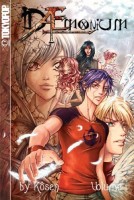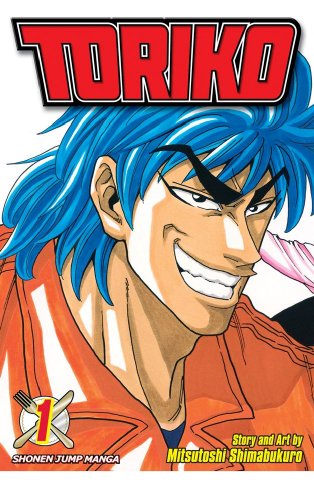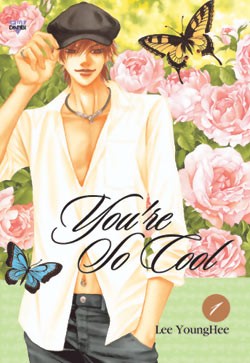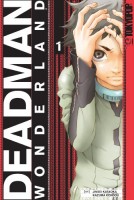 Daemonium, vol. 1
Daemonium, vol. 1
By Kosen
Rated OT, for Older Teen (16+)
Tokyopop, $10.99
Kosen is a Spanish duo who have been writing and drawing BL manga for some time now, and their professionalism shows through in this horror story about a teenage boy whose world gets turned upside down.
Daemonium starts out like a lot of high-school graphic novels. Seisu is returning home from a trip to an amusement park with his parents, everyone is laughing and happy, and then in a moment, the car crashes, Seisu’s parents are dead, and he is left with a terrible scar. Fast forward to high school, where everyone notices the jagged scar running down Seisu’s face and no one notices the fact that aside from that, he’s very handsome. Instead they call him a freak and the school bully beats him up. Seisu’s awesomely beautiful sister, Alys, rescues him from the thugs and cheers him up—just like she always does, apparently.
A few pages later, Alys announces that she is going to take her brother on a surprise trip, and off they go to a remote monastery where they are practically the only guests. What could possibly go wrong? The story takes off from there in a things-are-not-what-they-seem direction that is at once comfortably familiar to fans of the genre and unpredictable enough to be interesting. The story is a bit offbeat, with two hunky angels fighting to save Seisu’s soul, a trip to a hospital where angels go to detox after being in hell (complete with fetish-y angel nurses in old-fashioned nurse uniforms—nurses never wear scrubs in manga), and our hero taking a mad drive down a dark road with a straitjacketed girl in the passenger seat.
The storytelling lopes along at a nice pace until the last third of the book, when suddenly the plot gets a lot more complicated and the dialogue gets a lot more expository, as the characters explain the rules of heaven and hell in order for the plot to make sense. It all moved too fast for me, and it felt artificial, as if people were being put into place in order to have a dramatic moment.
All this sped-up storytelling might have made sense if there had been a volume 2, but Daemonium must have been one of the victims of Tokyopop’s restructuring, as I see no evidence that a second volume was ever published.
BL fans should be aware that there is only the very faintest hint of yaoi in this book; it’s a horror story, not a love story. There is some horror-style female nudity (i.e. nude female hanging upside down from the ceiling). Kosen fans might want to pick up this volume to enjoy the art or to complete their collections, but it’s a tough sell for the rest of us.
(This review is based on a review copy provided by the publisher.)




